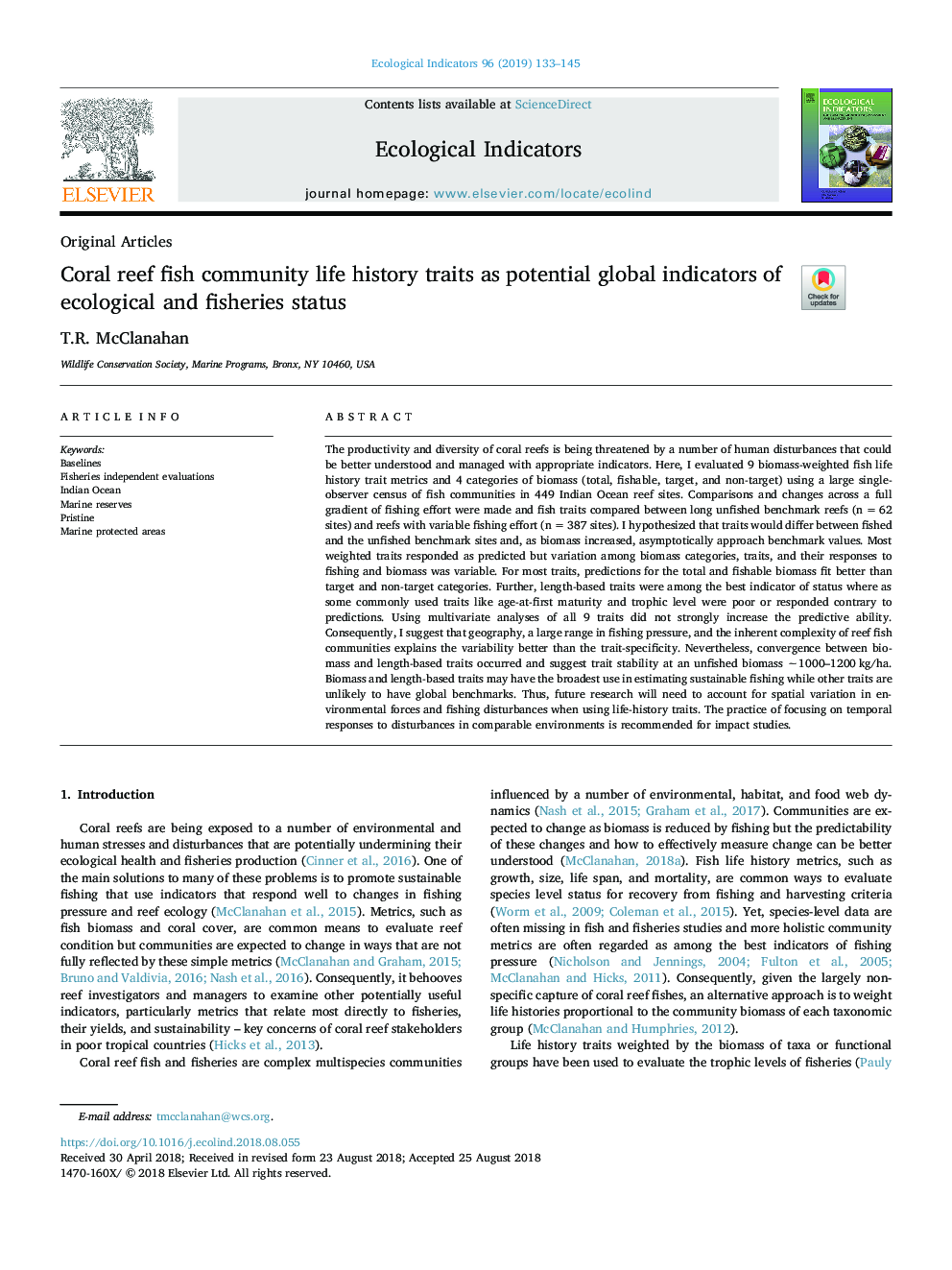| کد مقاله | کد نشریه | سال انتشار | مقاله انگلیسی | نسخه تمام متن |
|---|---|---|---|---|
| 10144200 | 1646298 | 2019 | 13 صفحه PDF | دانلود رایگان |
عنوان انگلیسی مقاله ISI
Coral reef fish community life history traits as potential global indicators of ecological and fisheries status
ترجمه فارسی عنوان
ویژگی های تاریخ زندگی اجتماعی ماهی های صخره ای مرجانی به عنوان شاخص های بالقوه جهانی وضعیت اکولوژیکی و شیلات شناخته شده است
دانلود مقاله + سفارش ترجمه
دانلود مقاله ISI انگلیسی
رایگان برای ایرانیان
کلمات کلیدی
بازنشستگان، ارزیابی های مستقل شیلات، اقیانوس هند، ذخایر دریایی، تر و تازه، مناطق حفاظت شده دریایی،
موضوعات مرتبط
علوم زیستی و بیوفناوری
علوم کشاورزی و بیولوژیک
بوم شناسی، تکامل، رفتار و سامانه شناسی
چکیده انگلیسی
The productivity and diversity of coral reefs is being threatened by a number of human disturbances that could be better understood and managed with appropriate indicators. Here, I evaluated 9 biomass-weighted fish life history trait metrics and 4 categories of biomass (total, fishable, target, and non-target) using a large single-observer census of fish communities in 449 Indian Ocean reef sites. Comparisons and changes across a full gradient of fishing effort were made and fish traits compared between long unfished benchmark reefs (nâ¯=â¯62 sites) and reefs with variable fishing effort (nâ¯=â¯387 sites). I hypothesized that traits would differ between fished and the unfished benchmark sites and, as biomass increased, asymptotically approach benchmark values. Most weighted traits responded as predicted but variation among biomass categories, traits, and their responses to fishing and biomass was variable. For most traits, predictions for the total and fishable biomass fit better than target and non-target categories. Further, length-based traits were among the best indicator of status where as some commonly used traits like age-at-first maturity and trophic level were poor or responded contrary to predictions. Using multivariate analyses of all 9 traits did not strongly increase the predictive ability. Consequently, I suggest that geography, a large range in fishing pressure, and the inherent complexity of reef fish communities explains the variability better than the trait-specificity. Nevertheless, convergence between biomass and length-based traits occurred and suggest trait stability at an unfished biomass â¼1000-1200â¯kg/ha. Biomass and length-based traits may have the broadest use in estimating sustainable fishing while other traits are unlikely to have global benchmarks. Thus, future research will need to account for spatial variation in environmental forces and fishing disturbances when using life-history traits. The practice of focusing on temporal responses to disturbances in comparable environments is recommended for impact studies.
ناشر
Database: Elsevier - ScienceDirect (ساینس دایرکت)
Journal: Ecological Indicators - Volume 96, Part 1, January 2019, Pages 133-145
Journal: Ecological Indicators - Volume 96, Part 1, January 2019, Pages 133-145
نویسندگان
T.R. McClanahan,
